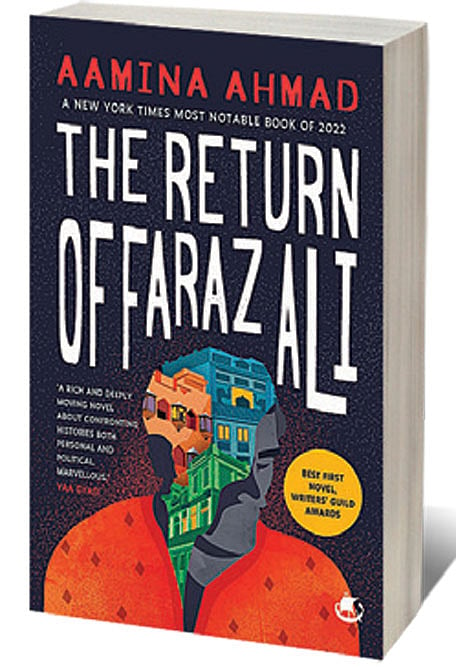Whispers from the Walled City

WHAT HAPPENS WHEN a police inspector with a reputation for unquestioning obedience goes against the orders issued by his superiors? Does he become a poster boy for speaking truth to power, or a cautionary tale about the fate that befalls those who pick conscience over career prospects? How do his bold choices affect his family, the people whom he stands up for, and the well-oiled machinery of power that runs on deference, favours, cover-ups and rewards?
Read Aamina Ahmad’s novel The Return of Faraz Ali to get entangled in the gripping story of the eponymous protagonist’s life. It is set, for the most part, in the city of Lahore, but also ends up taking the reader to places such as Benghazi, Dhaka, Gwalior, Karachi, Gujranwala, London and Islamabad. It is narrated over a period that stretches from 1937 to 1976, using flashbacks that suddenly bring in new information to both confound and illuminate.
When Sonia, a young sex worker, is killed in Lahore’s Heera Mandi—a red-light district also known as Shahi Mohalla—Faraz is expected to take charge at a new posting in the nearby Tibbi Station. The instructions from above are clear, and his colleagues remind him to follow them. His job is to make sure that the case is shut without an investigation or even a first-information report. Any deviation from this plan could lead to dreadful consequences.
Faraz knows this but cannot help himself. He was born to a woman named Firdous in the same neighbourhood, and spent his early childhood there, before his father— Wajid, a bureaucrat with no intention of marrying his mother—had him abducted. Though Faraz got a respectable life outside the mohalla, he always yearned to return and ask Firdous why she allowed her son to be taken away and never came looking. Faraz also has a sister. In the mohalla, she is Rozina. Outside, she is Heer—a film star whose fortunes are on the decline. She has a daughter, Mina, to look after, so living off sex work seems to be her only choice.
2025 In Review
12 Dec 2025 - Vol 04 | Issue 51
Words and scenes in retrospect
Does Faraz gather the courage to meet his mother and sister while stirring up trouble in Sonia’s case? Can he afford to let other police officers know about his origins? Is he even aware of the fact that he has a niece, and that she is in love with Sonia’s brother Irfan?
Aamina Ahmad’s debut novel makes an excellent first impression with her careful exploration of everyday life in the mohalla, and the relationships that nurture and imprison her characters who seem like pawns on the chessboard of history. Their internal dilemmas and external conflicts play out against the backdrop of historical events like World War II, the end of British rule in India, the Partition and subsequent creation of India and Pakistan as separate nation states, and the Bangladesh Liberation War of 1971.
This book is critical of West Pakistan’s human rights abuses and suppression of the Bengali language in East Pakistan, which went on to become Bangladesh. It touches upon the belief that, whenever there is turmoil in Pakistan, it is assumed that India is fomenting chaos. Zulfikar Ali Bhutto, Ayub Khan, Indira Gandhi and Benazir Bhutto are named in the novel but they do not appear in any scenes. They are spoken of only to evoke the political climate.
What makes this a book worth remembering is not the people alone but also the author’s strong sense of place with respect to Lahore. She captures it all—the poetry of Faiz Ahmed Faiz, Sara Shagufta and Habib Jalib, the walled city’s alleys, kites fluttering in the sky, Muharram processions, Anarkali Bazaar, Lahore Zoo, Gulberg, Pak Tea House, Faletti’s Hotel, Badshahi Masjid, and miracle cures for male infertility disguised as fresh fruit juice.

